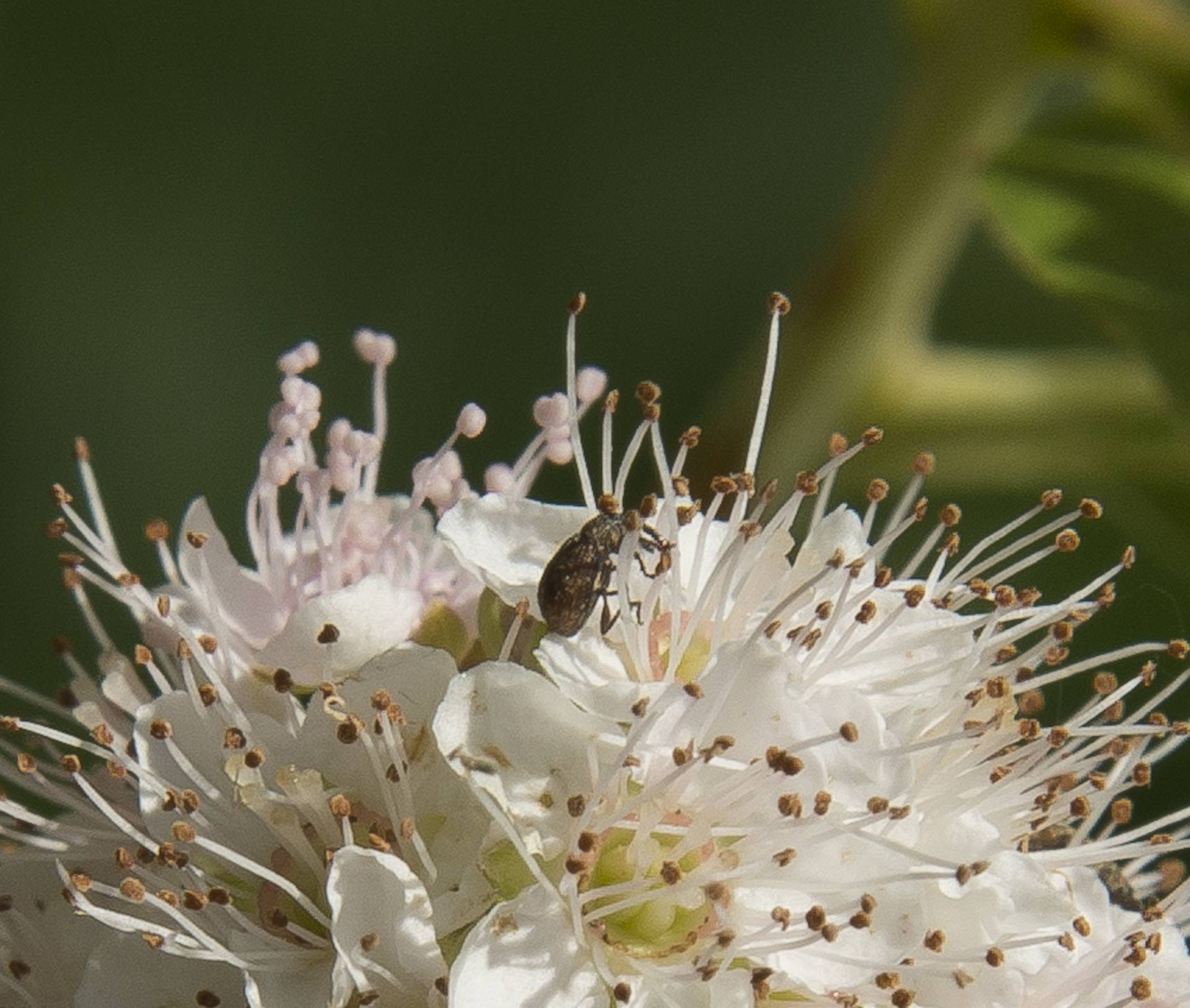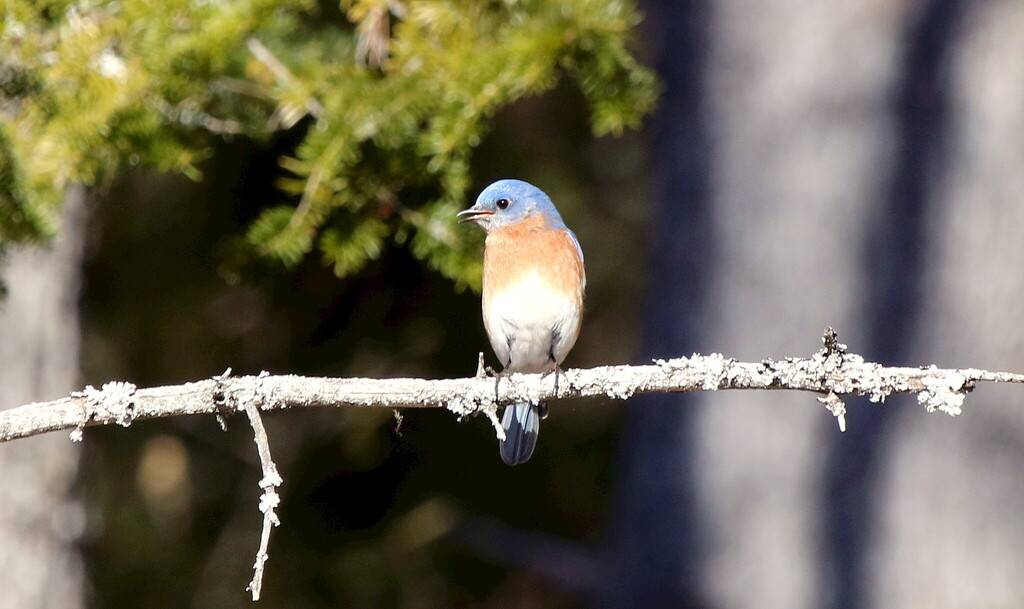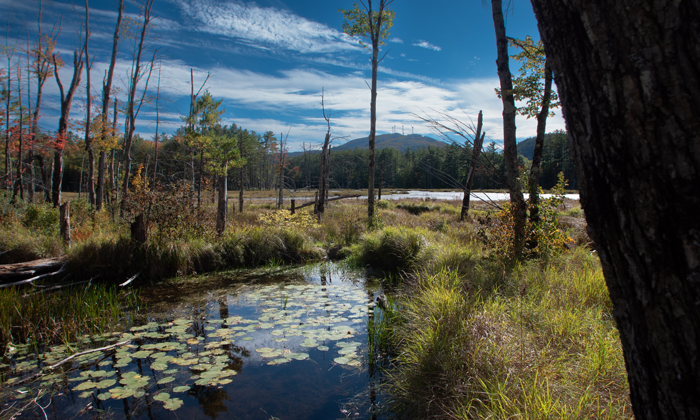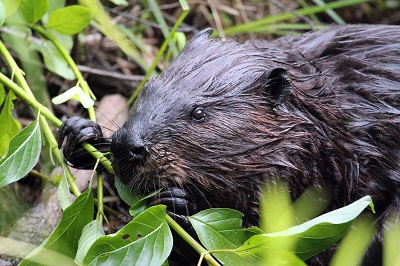

Spring Wildflower Walk
Saturday, May 17 (rain date May 18)
9:00 – 11:30 AM/Noon
Photo by Forrest Seavey.
Spring Bird Walk, Sunday, May 18 from 7:00 to 9:30 AM
with SLNSC Executive Director Iain MacLeod.
Conserving Land. Connecting People with Nature.
Welcome! We are a private, all-volunteer organization supported generously by donations.
Program Questions? [email protected]
Help us establish and sustain our vision and mission to protect the greater Baker River Valley here in central NH.
Learn more about our seasonal volunteer opportunities like trail work, working with school groups and being a Bog Host at our nature center!

Who We Are
Most people know us as Quincy Bog Natural Area or Pemi-Baker Land Trust (PBLT), but when you read the “fine print” you’ll find we are registered in New Hampshire and legally operating as a 501 (c) 3 organization known as Rumney Ecological Systems (RES).
RES is a non-profit organization dedicated to conserving natural areas in the Baker River Valley watershed, the Pemigewasset watershed, West Branch Brook Forest, and Quincy Bog. The goal is keeping these areas open to the public for observation, research and education in natural history and for recreation appropriate to a natural area.
In addition, Rumney Ecological Systems is a Land Trust registered under the name Pemi-Baker Land Trust and a member of the Land Trust Alliance. The PBLT is able to help the owners of smaller parcels that may not fit the acquisition plans of the larger land trusts in New Hampshire.
Governance
To read our Bylaws, click here.
To read our Strategic Plan, click here.
We envision a future that reflects our founder’s passion for protecting and sharing special places in our region. The organization will work to establish and sustain:
- An engaged and suitably trained volunteer organization consisting of a Board of Directors, bog hosts and other volunteers;
- A Nature Center and trail system through the Quincy Bog and other managed properties that are well maintained, well known, accessible and free of charge to the public;
- A land trust which protects properties of conservation value in partnership with area land owners;
- Exemplary environmental and resource management practices employed at all properties owned by the organization, according to written management plans;
- A positive and engaged relationship with the local community, educational institutions, and environmental organizations.
Our mission is to offer to the public nature-oriented opportunities for outdoor recreation, land protection, education and research at Quincy Bog and other properties that are owned or held in conservation easement via the Pemi-Baker Land Trust.
Threatened by a developer seeking to fill the bog and sell it for house lots, Quincy Bog was acquired by a group of Rumney residents in 1974. Led by naturalist and avid bird watcher George N. “Joe” Kent, the goal was to insure its preservation as a natural area. The group incorporated as Rumney Ecological Systems (RES), a non-profit organization whose directors administer the reserve.
In 1976, with assistance from The Nature Conservancy, Rumney Ecological Systems purchased additional land bordering the Bog, establishing the Quincy Bog Natural Area. A nature trail was established, along which Joe led frequent bird and plant walks.
To further the fledgling organization’s educational and research goals, in 1977 Rumney Ecological Systems received a matching grant from the New Hampshire Charitable Foundation to build a Nature Center. The center was completed in 1978 and dedicated to the memory of Hobart Van Deusen, former Curator of Mammals at the American Museum of Natural History in New York, an early supporter of efforts to save the Bog. The Nature Center includes a meeting room with a library, a small office/work room, and an expansive porch overlooking Quincy Bog.
In 1998 Rumney Ecological Systems was able to purchase the remaining private land along the Bog perimeter, funded by contributions from directors, individual supporters of the Bog and private foundations. This acquisition ensured full protection of Quincy Bog and allowed the completion of the nature trail so that visitors could circumnavigate the Bog without using public roads.
More recently, recognizing that the Quincy Bog Natural Area does not exist in isolation, two additional properties were acquired that impact the Bog. In 2002 the Nature Conservancy transferred to Rumney Ecological Systems 91 acres of upland forest which lie to the east of and just one property removed from the Bog. The undeveloped woodlot gives rise to streams that flow into Quincy Bog. In June of 2003 the State of New Hampshire donated the Baker State Forest to Rumney Ecological Systems. Abutting the west side of the Bog, the 5-acre plot remains a demonstration forest.
President’s Perspective
For several months now, the Board of Directors has discussed the philosophy of land acknowledgment, including statements that recognize the history, culture, and rights of Indigenous peo-ples in relation to the Quincy Bog Natural Area. Land acknowl-edgment is more than a token gesture; it reflects an authentic understanding of historical and ongoing relationships between Indigenous communities and the land. One board member pro-vided insight into the complexity of this task, having recently com-pleted this process with the Hubbard Brook Experimental Forest.
As part of our exploration of this topic, and concerned about mis-representation or incomplete acknowledgment, we reached out to a few Abenaki groups. It seems not enough to say, “We acknowledge the traditional lands of the X nation” since we also ask ourselves, “Are we supporting this community with a long-term commitment to change?” While some of the groups we con-tacted didn’t respond, one group said they were overwhelmed with requests. A representative from this group suggested we create a bioinventory of the land, something we’ve been doing since the 1970s.
Besides questions about land acknowledgement, another chal-lenge we face is that the name of part of our organization is the Pemi-Baker Land Trust. Thomas Baker was a colonial settler known for his violent actions toward Native Americans in the area around Plymouth during the late 17th century. Wayne King’s book, Asquamchumaukee – Place of Mountain Waters, explores this activity in depth.
We quickly learned that an acknowledgement is a complex pro-cess that goes beyond writing a statement. We became aware that NH has no state or federally recognized tribes. In April this year, at the United Nations in New York City during the 23rd ses-sion of the UN Permanent Forum on Indigenous Issues, the chief of the Abenakis of Odanak in Canada denounced the Abenakis of Vermont as frauds. He stated, “We strongly denounce the theft of our culture, our identity, and our traditions by self-proclaimed groups from Vermont. This fraud jeopardizes our sovereignty over our ancestral territory, Ndakina, directly affecting our ability to occupy and use it for our traditional activities.”
Creating a land acknowledgment can be a powerful way to honor Indigenous peoples and their histories, but it comes with unique challenges. Indigenous peoples were historically moved, dis-placed, or had their boundaries redefined through colonial prac-tices.
Figuring out the exact land relationships today, versus his-toric ones, is complex, especially in the presence of multiple In-digenous nations with competing historical claims. Our Board will continue these meaningful discussions in hopes of fostering un-derstanding and respect for Indigenous communities, and their relationship to the land, and to raise awareness about Indigenous histories, the ongoing impacts of colonization, and potential for reconciliation.
Marguerite St. Laurent-Crowell

Quincy Bog Natural Area
The 43-acre property, consisting of a pond and associated wetlands surrounded by upland forest, supports a variety of plant and animal life, including typical bog/fen vegetation and an active beaver colony.
The mostly level trail is approximately a mile in length and can be accessed from the main parking area at the end of Quincy Bog Road or from the alternate parking area at the end of Cranberry Bog Road. It is open to the public free of charge 365 days a year during daylight hours. A trail guide, available at the kiosks in the parking areas and in the mailbox on the Nature Center porch, describes features along the trail.
Click here for trail map
Click here for trail guide
2025 PROGRAMS COMING SOON!
2024 Walks and Talks
The Quincy Bog Nature Center has significantly expanded its nature walks, workshops and evening programs and has a growing outreach to local schools through its Junior Naturalist program. With a sole exception, these programs are all provided at no cost to participants.
Evening programs take place at the Nature Center (131 Quincy Bog Rd. in Rumney) during the summer. All talks are free (donations are gratefully accepted), open to the public, and are followed by an informal reception with refreshments. These lectures are underwritten in part by the Ruth V. Fisher Fund.
The upper half of the property (primarily conifers) is allowed to proceed naturally, without forest management. The lower half of the property, consisting of mixed hardwood and white pine, is managed to promote forest diversity and enhance wildlife habitat. There are two loop trails: a lower, moderately strenuous hike and a steeper, more rugged upper hiking trail.
Click here for trail map
The former Baker State Forest was deeded by the State of New Hampshire and renamed the Baker Forest. A combination red pine/white pine plantation, the five-acre property will be managed for sustainable timber production.
The forest was harvested in October of 2017 to remove mature and often diseased pine and to regenerate a new crop of pine trees to improve habitat for animals that need young forest and shrub conditions. Revenue from the sale will be used to support the programs of Quincy Bog including trail maintenance.
Since 2009 the Quincy Bog Natural Area has sponsored a Junior Naturalist Program. Whether you are teacher, mentor, caregiver or parent, this program is a great way to experience the Bog and spend meaningful time outdoors with a young person or a classroom of children.

The Junior Naturalist Activity Book is full of pictures, illustrations, interesting facts, and activities for kids of all ages. Recently revised, it continues to focus on the three main habitats at the Bog. Additions include a new watershed section, the role that wetlands play in watershed ecology, and new activities for grades K-8, like connecting children to nature using their senses.
The program is straightforward and designed to accommodate a variety of ages. You can download the Activity Book here and print it out for use. Copies are also available at the Nature Center when it is open during the summer months. The goal of the material is to foster awareness and understanding about Quincy Bog and to empower young folks to protect special places like the Quincy Bog Natural Area. Following the activities in the activity book might be stretched out over a few visits or completed in a single visit. The program is flexible with different requirements for different ages.
To become a Junior Naturalist children also complete a service project, which can be as simple as picking up trash on the trails or sharing knowledge about the Bog with friends and family. Kids can even develop a Quincy Bog service project of their own. When the activities and a service project are finished, during the summer, parents/mentors can bring the book to the Nature Center where a friendly Bog Host on duty will check the workbook and provide kids with a Junior Naturalist badge.
Teachers should contact School Coordinator Sarah Dunham-Miliotis at [email protected] to make arrangements for in person or class visits.

Pemi-Baker Land Trust
Welcome to the Pemi-Baker Land Trust (PBLT). We are a local land trust serving the landowners of the Baker River and upper Pemigewasset River Valleys in central New Hampshire. Since we are a small regional land trust, we can serve people with parcels of land that are not of interest to the large land trusts such as the Society for the Protection of New Hampshire Forests or The Trust for Public Lands.
PBLT covers lands in or parts of: Benton, Campton, Dorchester, Ellsworth, Groton, Holderness, Lincoln, Orford, Piermont, Plymouth, Rumney, Thornton, Warren, Wentworth, and Woodstock, a region defined more by watershed than political boundaries.
We currently protect 15 New Hampshire properties (see Conserved Lands heading on Home page), three through direct ownership, 11 by holding conservation easements, and one by a deed easement. We own 140 acres in the Quincy section of Rumney. We protect an additional 866 acres by holding conservation easements on a parcel in Dorchester, four properties in Rumney (including the deed easement), five properties in Plymouth, and one property in Campton.
In considering properties for conservation protection, the Pemi-Baker Land Trust seeks those which exhibit one or more of the following characteristics:
1.Water Quality and Quantity
2. Forest and Agriculture Resources
3. Wildlife Habitat and Plant Communities
4. Community Value
Among lands with significant conservation values, PBLT will favor properties that:
1. Abut, enlarge, or provide linkages to previously protected land,
2. Are subject to an immediate threat of change of use,
3. Are available under unique circumstances that are not likely to occur again,
4. Are important to the local community,
5. Would be a stimulus for future protection projects.
We are currently working with landowners who have asked us to consider conservation easements on their property. If you have property in the Baker River or upper Pemigewasset valleys that you would like protected from development by a conservation easement or other means, please contact us. We would be pleased to discuss the possibilities with you without any obligation on your part.
For more information, contact Widge Kent, (603-536-2141) or [email protected].
The Pemi-Baker Land Trust will evaluate each project on its own merits, carefully examining each property, the values which would be conserved, and the public benefit of protecting the property.
A conservation easement (sometimes also referred to as a conservation restriction) is a voluntary, legal agreement between a landowner and a land trust or government agency that permanently limits uses of the land in order to protect its conservation values. It allows you to continue to own and use your land and to sell it or pass it on to heirs.
When you donate a conservation easement to a land trust, you give up some of the rights associated with the land. For example, you might give up the right to build additional structures, except in areas designated for that purpose, while retaining the right to grow crops or harvest timber. Future owners also will be bound by the easement’s terms. The land trust is responsible for making sure the easement’s terms are followed on a long-term basis.
Conservation easements offer great flexibility. An easement on property containing rare wildlife habitat might prohibit any development, for example, while one on a farm might allow continued farming and the building of additional agricultural structures. An easement may apply to just a portion of the property, and may or may not allow public access – it is up to the landowner.
A landowner sometimes sells a conservation easement to a land trust or government agency, but often easements are donated. If the donation benefits the public by permanently protecting important conservation resources and meets other federal tax code requirements it can qualify as a tax-deductible charitable donation. The amount of the donation is the difference between the land’s value with the easement and its value without the easement.
Placing an easement on your property may or may not result in property tax savings. PBLT does not pay for conservation easements, but accepts easements donated with or without the intention to seek a tax deduction
Perhaps most important, a conservation easement can be essential for passing land on to the next generation. By removing the land’s development potential, the easement lowers its market value, which in turn lowers estate tax. Whether the easement is donated during life or by will, it can make a critical difference in the heirs’ ability to keep the land intact. The benefit is knowing that the easement property is conserved in perpetuity and will never be developed or degraded